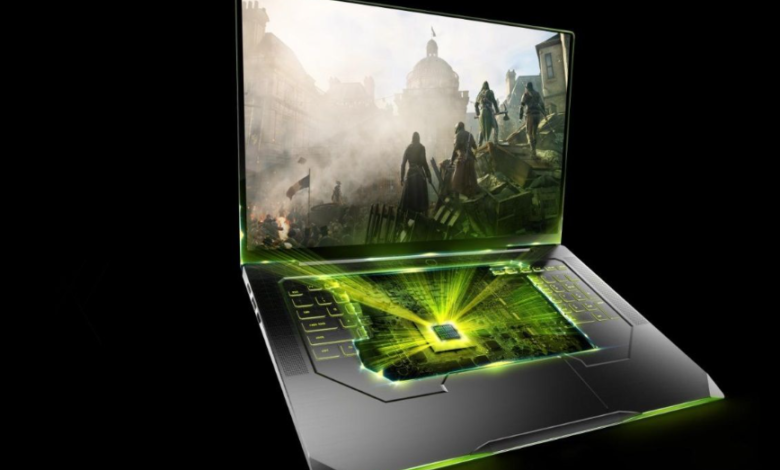How do the Best Graphics Cards for Gaming Enhance Visual Fidelity?

When it comes to gaming, visuals play a crucial role in immersing you in virtual worlds and enhancing your overall gaming experience. So, to experience smooth visuals in gaming, opt for the best graphic card.
The best graphics card for gaming has a powerhouse component that is responsible for rendering lifelike graphics and delivering smooth gameplay.
In this article, we’ll delve into how the graphics cards enhance visual fidelity in online gaming, allowing you to enjoy breathtaking graphics like never before.
High-Fidelity Rendering Technologies:
Graphics cards for gaming powered by cutting-edge rendering technologies play a pivotal position in enhancing visible fidelity by handing over realistic photos and immersive environments. These technologies leverage advanced algorithms and hardware acceleration to render complicated scenes with stunning elements and precision.
Ray Tracing:
Ray tracing is a rendering technique that simulates the conduct of mild rays in digital surroundings, producing highly sensible lights, shadows, and reflections. It is a singular method of rendering. As a result, you can enjoy vivid pics with unrivaled realism and immersion. Also, if you are playing games using graphic cards with specialized ray-tracing hardware, it can help you with speed and clarity.
DLSS (Deep Learning Super Sampling):
DLSS is a rendering approach powered with synthetic intelligence that upscales low-resolution graphics to higher resolutions even while maintaining detail and clarity. Even at greater resolutions and refresh rates, graphic cards can produce better visual satisfaction and extra fluid gameplay with the help of AI.
HDR (High Dynamic Range):
HDR, or high dynamic variety produces more bright and lifelike photos by extending the variety of colors and brightness tiers. With video games that have richer hues, deeper blacks, and brighter highlights, graphic cards help HDR let you experience scenes with breathtaking realism.
High-Performance Graphics Processing:
In addition to superior rendering technology, the first-class graphic cards for gaming boost overall performance graphics processing capabilities. This allows them to address hard gaming environments effortlessly. These graphic cards feature powerful GPUs (Graphics Processing Units) equipped with a mess of cores and specialized hardware. Moreover, this is designed to accelerate graphic rendering and compute obligations.
CUDA Cores:
Compute Unified Device Architecture (CUDA) cores are parallel processing units that can be designed to deal with complex computational and graphical duties. These cores are found in NVIDIA’s playing cards. Even in the most hard sports settings, graphic cards can produce fluid and responsive gameplay by using the parallel processing abilities of CUDA cores.
Stream Processors:
In AMD graphic cards, movement processors known as Shader Cores—are in charge of sporting out shading computations and different graphic processing obligations. More movement processors on a graphic card permit for greater complex shading outcomes to be handled and progressed visible constancy in games.
Tensor Cores:
Tensor cores are specialized processing units found in NVIDIA’s RTX series graphic cards. This can be designed for AI and deep studying tasks. By leveraging tensor cores, graphic cards can boost AI-based rendering strategies like DLSS, resulting in smoother movement rates and stepped-forward pictures in supported games.
Optimized Memory and Bandwidth:
Memory bandwidth plays a critical role in determining the performance and visual fidelity of a graphic card, as it at once influences the velocity at which data can be transferred between the GPU and the VRAM (Video Random Access Memory).
The best graphic cards for gaming function optimized memory configurations and excessive-speed reminiscence interfaces to ensure clean and responsive gameplay, even at high resolutions and settings.
GDDR6X Memory:
The most recent advancement in graphic memory technology, GDDR6X provides increased memory bandwidth and stronger performance compared to previous iterations. When graphic cards with GDDR6X RAM are linked with them, demanding video games can be played more fluidly and with faster loading times.
Memory bandwidth:
The memory bandwidth regulates the amount of data that can move between the VRAM and the GPU within a given clock cycle. Larger memory bandwidths enhance performance and visible fidelity, especially at higher resolutions and settings.
Memory Compression:
Memory compression techniques help to maximize memory usage concurrently, reducing memory bandwidth requests and enhancing memory overall performance. Using graphic cards with memory compression algorithms can obtain better performance and visual fidelity without requiring extra memory bandwidth.
Enhanced Real-Time Rendering Techniques:
Innovative real-time rendering strategies are critical to pushing the boundaries of visual constancy in gaming. Graphics cards empower builders to create immersive aspects packed with realistic lights, dynamic shadows, and real-searching animations.
Global Illumination:
By simulating the interaction of oblique lighting fixtures in a virtual environment, global illumination algorithms yield more realistic and immersive lighting fixtures. Developers can acquire actual-time cinematic lighting fixtures that are remarkable and beautify the authenticity of video games through the use of graphic cards organized with dedicated hardware for worldwide illumination.
Dynamic Weather Systems:
These structures upload a further level of realism to recreation scenarios by simulating climate sports like rain, snow, and fog. With graphic cards that control dynamic climate effects in actual time, gamers can also revel in continually converting landscapes due to practical climate transitions and repercussions.
Advanced Physics Simulation:
By the usage of superior physics simulation engines, builders can also create practical interactions between players and devices in a virtual international. Graphic cards with hardware-extended physics processing can mimic complicated bodily interactions in actual time. This leads to greater aesthetically desirable and engrossing recreation narratives.
Immersive Virtual Reality (VR) Support:
Virtual Reality (VR) gaming offers an incredible diploma of immersion, permitting game enthusiasts to step into digital worlds and interact with them with easy methods. The best graphics cards for gaming can be optimized for VR gaming play and immersive VR reports with excessive visible constancy.
VR-Ready Hardware:
To function with VR apps easily, graphic cards can be VR-equipped and adhere to stringent overall performance and compatibility necessities. These cards’ occasional latency rendering talents and excessive overall performance GPUs assist lessen motion illness and offer a snug VR experience.
Asynchronous Spacewarp (ASW):
This technique facilitates keeping clean and engrossing VR storytelling through judder reduction and frame interpolation when the GPU is unable to maintain the crucial body charge. When gambling VR video games, you can enjoy high-quality visual fidelity and minimal movement sickness when using graphic cards to assist with ASW.
Conclusion:
The best graphics cards for gaming are more than just pieces of tool; they’re essential for enabling breathtaking graphics and captivating gameplay in your preferred titles. These cards are made to push the limits of visual fidelity and provide unmatched gaming experiences.



